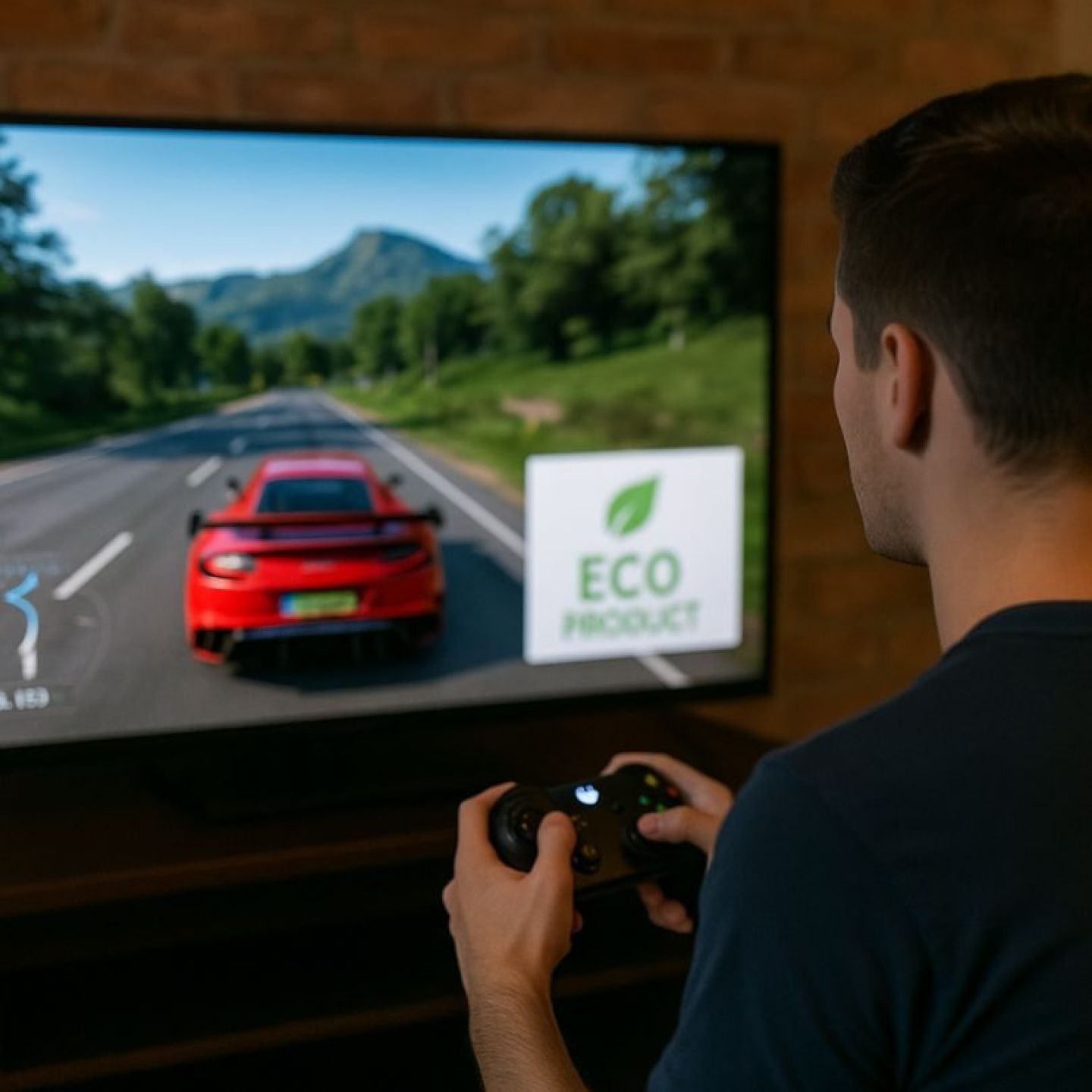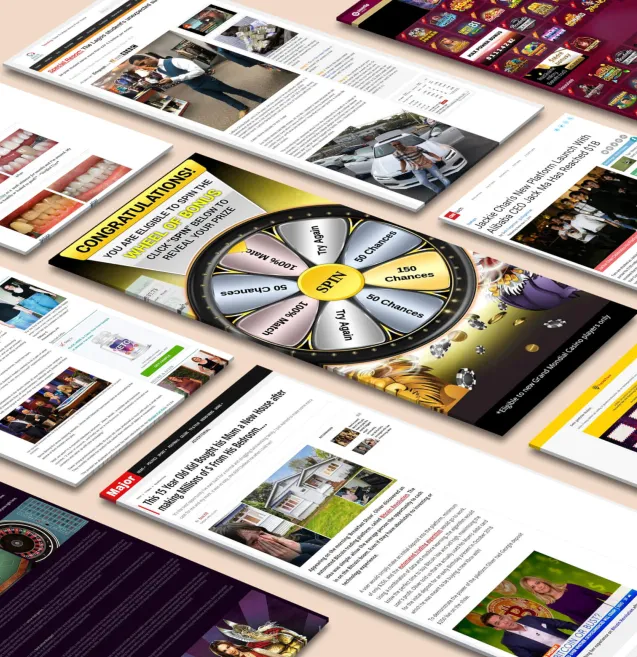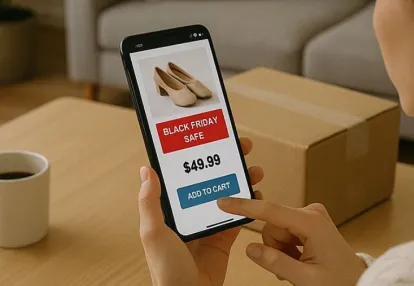
Our spy tools monitor millions of native ads from over 60+ countries and thousands of publishers.
Get StartedNative ads in gaming are a game-changer. They move away from annoying ads that disrupt your playtime and instead integrate brands smoothly into the game itself. So, instead of seeing a pop-up or banner ad while you're playing, you'll now come across promotional content that's seamlessly woven into the game's design—like characters wearing branded outfits or racing games featuring sponsored vehicles.
This new way of advertising is called immersive advertising, and it completely changes how brands connect with their audience. Instead of forcing your message onto unwilling viewers, you now have the opportunity to add value to experiences that players already enjoy. When done right, virtual worlds advertising not only makes the game more realistic but also enhances gameplay and offers genuine brand exposure.
But there's a catch: this method requires skill and expertise. You can't just slap your logo onto any game and expect it to work. The secret lies in understanding how games function, what motivates players, and how stories unfold within these digital realms. Brands that can strike this delicate balance are rewarded with higher engagement rates and authentic emotional connections with their audience.
The gaming industry is booming, with billions of players around the globe. This presents an ideal opportunity for clever marketing strategies that respect the player's experience while still meeting business goals. Additionally, as consumers become more environmentally conscious, it's important for marketing strategies to consider sustainability as well. One potential solution could be implementing native ads, which have been shown to significantly lower the carbon footprint associated with traditional advertising methods.
The gaming industry is experiencing unprecedented growth, with global revenues exceeding $184 billion and expected to continue rising. This booming industry presents significant opportunities for brands looking to connect with engaged audiences. Players spend hours immersed in virtual worlds, providing longer exposure times that traditional advertising methods can't compete with.
Mobile game advertising is the fastest-growing segment in this ecosystem. Mobile gaming alone accounts for over half of all gaming revenue, with billions of players accessing games through their smartphones daily. This accessibility has democratized gaming, breaking down barriers that once limited participation to specific demographics.
The transformation in evolving gaming demographics has shattered long-held assumptions about who plays games. Today's gaming audience includes people of all ages, genders, and socioeconomic backgrounds. Women now represent nearly half of all gamers, while players over 35 constitute a significant portion of the market. This demographic shift creates fertile ground for native advertising because brands can reach diverse consumer segments within environments where they're actively engaged and receptive.
This expanded audience brings varied interests, purchasing power, and brand preferences into gaming spaces. Luxury brands, everyday consumer products, and B2B services all have legitimate opportunities to connect with their target markets through thoughtfully integrated gaming experiences. The key lies in understanding how these diverse players interact with virtual environments and what types of brand integrations enhance rather than disrupt their gaming sessions.
UI-congruent placements represent the gold standard for native advertising in gaming environments. These placements integrate so naturally with the game's interface and world design that players perceive them as authentic elements rather than promotional content. You achieve this by matching the visual style, context, and functionality of your brand elements to the game's existing aesthetic and mechanics.
The most effective product placement in games mirrors real-world environments. Racing games showcase branded vehicles that players can drive and customize, creating extended engagement with your brand. Sports titles feature authentic team jerseys, stadium signage, and equipment that enhance realism while promoting your products. Open-world games incorporate branded storefronts, billboards, and consumer goods that populate virtual cities with familiar brands.
Seamless ad integration requires deep understanding of each game's unique design language. You must consider:
Nike's collaboration with NBA 2K demonstrates this approach perfectly. Players don't just see Nike branding; they actively engage with authentic sneaker designs that affect their character's performance stats. This integration feels natural because basketball players wear Nike shoes in reality, creating an authentic connection that enhances both gameplay immersion and brand exposure.
Brand safety in games requires careful supervision to protect your reputation from potentially damaging associations. Gaming content can vary greatly—from family-friendly adventures to mature-rated titles featuring violence, adult themes, or controversial subject matter. You need thorough vetting strategies to ensure your brand fits with appropriate gaming environments.
Before committing to placements, review gameplay footage, user-generated content policies, and community guidelines of the target games. This will help you understand the nature of the content and determine if it aligns with your brand values.
To assess gaming content suitability for your brand values, it's crucial to examine player demographics and typical in-game conversations. This information will give you insights into the audience that interacts with the game and how they communicate within that space.
Once your ads are live, implement real-time monitoring of user interactions around them. This will allow you to gauge how players are responding to your brand presence and make any necessary adjustments if needed.
When collaborating with game developers or publishers, establish partnership agreements that outline clear content standards for your brand's representation in their games. This ensures that both parties are on the same page regarding acceptable content categories.
Identify specific gaming environments that do not align with your brand values and create blacklists accordingly. This will help you avoid placing ads in contexts that could potentially harm your reputation.
Continuously evaluate the effectiveness of your ad placements by conducting regular audits and gathering player feedback. This will provide valuable insights into how well your brand is resonating with the gaming audience.
Gaming platforms like Roblox and Fortnite have strong content moderation practices in place, making them safer choices for family-oriented brands. It's important to establish ongoing relationships with game developers to ensure that your placements remain appropriate as games undergo updates and community-generated content.
Furthermore, the reality of advertising in virtual worlds offers valuable insights into creating effective in-game ad experiences while maintaining brand safety.
Traditional impression-based metrics fall short when evaluating native advertising success in gaming environments. You can't simply count how many times players saw your branded billboard or character skin—gaming demands deeper measurement beyond impressions that captures genuine player engagement.
Ad performance metrics in gaming require a fundamental shift from passive exposure to active interaction. Standard display advertising relies heavily on view counts and click-through rates, but these metrics miss the nuanced ways players engage with native content in games. A player might spend minutes examining your branded vehicle in a racing game or repeatedly interact with your sponsored in-game store without generating traditional "clicks."
Engagement tracking becomes your most valuable tool for understanding native ad effectiveness. You need to monitor:
Gaming platforms provide rich data streams that reveal player preferences and engagement patterns. You can track whether players actively seek out your branded items, share screenshots featuring your products, or modify their gameplay to interact more with sponsored content. These deeper insights reveal authentic brand affinity that impression counts simply cannot capture.
Creative collaboration with studios transforms native advertising from afterthought placement to integral game design. You need to engage developers during pre-production phases when core mechanics and storylines are still malleable. This early partnership allows your brand to become woven into the game's DNA rather than awkwardly inserted later.
Authentic brand integration requires understanding the game's universe, player motivations, and narrative arc. When Nike collaborated with NBA 2K, they didn't just slap logos onto jerseys—they worked with developers to create authentic player customization experiences that matched real-world basketball culture. The brand became part of the player's journey to build their virtual athlete.
Co-development strategies involve sharing creative resources and expertise. You might provide product designers to help create realistic in-game items, or brand storytellers to ensure your company's values align with character development. This collaborative approach produces branded content that players actually want to interact with.
The most successful partnerships treat game developers as creative equals, not advertising vendors. When Mercedes-Benz worked with Gran Turismo, they shared engineering data to ensure their virtual vehicles handled authentically. Players appreciated the realism, and the brand gained credibility through technical accuracy.
Your brand becomes part of the player's emotional connection to the game when integration feels natural and purposeful.
The world of immersive advertising has changed significantly from simple billboard placements to sophisticated interactive brand experiences that engage players on multiple levels. Brands are now focusing on creating memorable moments instead of just being passive observers.
One of the most exciting developments in this area is the rise of virtual showrooms. Luxury car manufacturers like BMW have built intricate digital dealerships within racing games, giving players the opportunity to:
These experiences seamlessly combine entertainment and commerce, offering genuine value to both players and brands.
Another game-changer is the introduction of branded challenges with real-world rewards. Energy drink companies now sponsor in-game tournaments where completing specific missions unlocks actual merchandise, concert tickets, or exclusive experiences. This strategy shifts advertising from being an interruption to becoming an incentive, actively involving players in brand storytelling.
In competitive gaming environments, custom skins featuring brands have proven to be highly effective. Fashion brands collaborate with developers to design limited-edition character outfits that players can earn through gameplay achievements. These cosmetic items not only serve as status symbols but also provide brands with extended visibility during gaming sessions.
Lastly, virtual events in games have reached unprecedented scale. Concerts, product launches, and brand activations are now attracting millions of participants simultaneously. These gatherings foster shared experiences that go beyond traditional advertising methods, establishing emotional connections between brands and gaming communities through unforgettable interactive moments.
The player-first approach transforms native advertising from intrusive marketing into genuine value creation. You prioritize player satisfaction by offering meaningful rewards that enhance the gaming experience rather than interrupting it. This strategy recognizes that engaged players become brand advocates when they feel respected and valued.
Rewarded ads operate on a simple principle: players voluntarily engage with branded content in exchange for valuable in-game benefits. You might watch a 30-second video advertisement to earn premium currency, unlock exclusive character skins, or receive power-ups that accelerate progression. The key lies in making these rewards genuinely useful and desirable.
Consider how mobile games implement this approach:
The effectiveness of value creation in gaming ads becomes evident in the metrics. Rewarded video ads achieve completion rates exceeding 90% compared to traditional banner ads with click-through rates below 1%. Players actively choose to engage because they receive tangible benefits that improve their gaming experience.
You create authentic connections when brands provide utility rather than pure promotion. Players develop positive associations with companies that enhance their gameplay, leading to higher brand recall and purchase intent. This approach builds trust by respecting player autonomy and delivering promised value consistently.
The world of native advertising in gaming is constantly changing and growing, thanks to new technologies that will completely transform how brands connect with players. Here are some key trends to watch out for:
AI personalization in gaming ads is leading the way in this change. It allows advertisers to create highly customized experiences based on each player's behavior, likes, and gaming habits. Expect to see ads that can change on the spot, showing different branded items or experiences to different players within the same game.
Another major advancement is through VR integrations, which offer incredible opportunities for immersive brand experiences. In virtual reality settings, brands can design fully interactive showrooms, product demonstrations, and branded experiences that feel seamless within the virtual realm. Players can physically engage with products, try out virtual vehicles, or navigate branded areas in ways that traditional gaming platforms cannot replicate.
The rise of blockchain rewards brings new possibilities for incentivizing players with cryptocurrency tokens, NFTs, and digital collectibles. These rewards hold real value for players while giving brands fresh avenues to foster loyalty and engagement. You might earn branded NFT items that have real-world worth or receive cryptocurrency rewards for taking part in brand challenges.
Esports sponsorships are also evolving beyond just naming rights for tournaments. They now include integrated brand experiences within competitive gaming settings. Brands are creating custom tournament modes, sponsoring in-game achievements, and developing branded training tools that professional gamers actually utilize during competitions.
The future of successful native ads gaming lies in understanding that players aren't just consumers—they're active participants in immersive digital worlds. You need to approach native advertising as a collaborative art form where your brand becomes part of the gaming narrative rather than an interruption to it.
Seamless brand integration requires you to think like a game designer first and a marketer second. When you prioritize the gaming experience, you create authentic connections that traditional advertising simply cannot achieve. Players can sense when brands genuinely contribute to their virtual adventures versus when they're being sold to.
The player satisfaction balance becomes your North Star for measuring success. You'll find that metrics like engagement time, brand recall, and positive sentiment matter more than traditional click-through rates. Players who feel valued and entertained become brand advocates naturally.
As you Play the Game: Building True Native Ads Inside Games and Virtual Worlds, remember that the most powerful advertising doesn't feel like advertising at all. Your brand's success depends on enhancing the player journey, not hijacking it.
Receive top converting landing pages in your inbox every week from us.
Quick Read
This blog analyzes post-Black Friday ad data to uncover key insights into evolving 2025 consumer behavior. It highlights shifting buying patterns, preferred ad formats, and the factors driving purchase decisions this season. Readers will gain valuable takeaways to refine their future campaigns based on real performance trends. Ideal for marketers seeking data-driven strategies to stay ahead in the competitive digital landscape.
Liam O’Connor
7 minNov 23, 2025
Quick Read
Generative AI is changing the way marketers create content, gain insights, and find solutions. It uses complex algorithms to analyze large amounts of data and generate outputs that mimic human thinking. This technology is a game-changer for marketers who want to automate and personalize their strategies on a larger scale than ever before.
Priya Kapoor
7 minNov 14, 2025
How-To
Native advertising has transformed the digital marketing landscape by seamlessly blending promotional content with the organic user experience. Unlike traditional banner ads that interrupt your browsing, native ads integrate naturally into the platform's content flow, making them feel less like advertisements and more like valuable information.
Elena Morales
7 minNov 8, 2025




